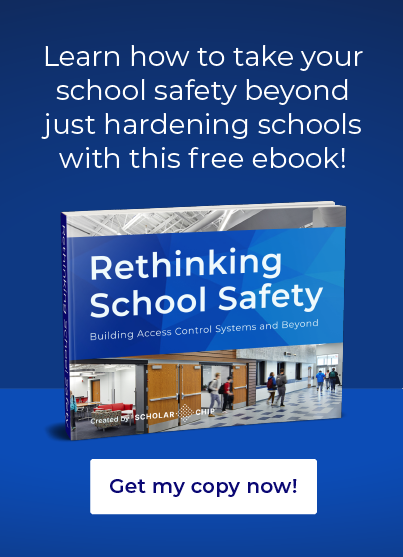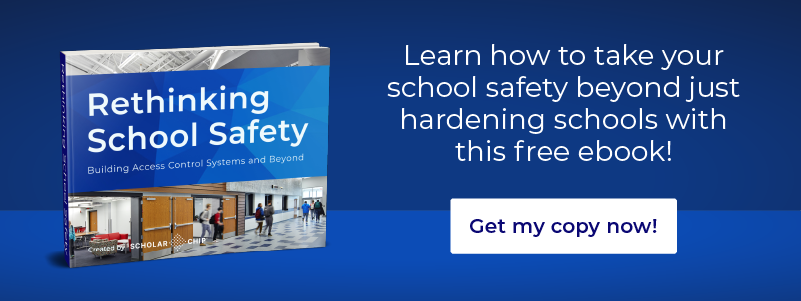The most pressing goal during a crisis is accounting for students. Our schools should be prepared for a variety of crises—from natural disasters, like earthquakes or floods, to man-made problems, like shootings.
Regardless of the cause of a crisis, however, it’s still priority number-one to make sure that no students are left without protection.
With hundreds or thousands of panicked students, this is no easy task. The best way to handle accounting for students during crisis situations is to automate attendance records as much as possible, as well as assign coordinator roles to your faculty and staff.
Install an automated student tracking system
When students come onto campus, you should know where they are at all times. In past decades, teachers and staff were often asked to take attendance throughout the day, often at the start of each class period, but this can be a time-consuming process that can often be derailed by human error. Such errors would be critical if an emergency situation did arise.
Instead of using paper attendance, automate with smart card readers throughout the campus and in the classrooms. With ScholarChip’s One Card, you can quickly make automated ID cards for every student in your school. These cards simplify taking attendance, which in turn, simplifies accounting for students during crisis situations.
It isn’t difficult to start using One Cards to track students as they come onto campus or move from class to class. ScholarChip’s Large Group and Building mobile kiosks can scan forty cards a minute, so districts can log students’ attendance as soon as they come on campus. Furthermore, our eClass attendance portal lets students tap their cards whenever they enter a classroom.
Ensure that students are where they’re supposed to be
During an emergency situation, you don’t want to lose time accounting for students who aren’t where they’re supposed to be. That’s why it’s important to integrate the One Card into many aspects of your campus. In connection with the Card, you can also install Secure Door Access locks onto all your doors.
These locks are not only accessible to students with their One Cards, but they’re also only accessible to students when they’re supposed to be in a specific place. So, for example, if a student has band during first period, they can’t access the band room during fifth period.
These locks make sure that you don’t need to look for students in places they shouldn’t be able to access.
Identify on-campus visitors
Accounting for the whereabouts of students, faculty, and staff is a daunting enough task, but you also need to have a plan in place for visitors. At any given time, your campus could have multiple visitors: parents, delivery people, or volunteers. You also need to account for these visitors during emergencies as well.
The simplest way to do this is with ScholarChip’s Visitor Management System. Whenever a visitor comes to campus, they need to first stop to be screened and to pick up a visitor ID badge. Make sure to set up your campus so no visitor can inadvertently skip this step. The system will then keep track if a visitor is still on campus or if they’ve checked out. If they’re still on campus, then you’ll know that you need to account for them too.
Develop a team
Every part of your campus should have someone who can specifically account for students, faculty, staff, and visitors. Make sure to assign multiple coordinators, depending on the size of your school, and then make sure that faculty and staff know who the coordinators are. The best way to do this is to make them easy to identify, like having them wear a brightly colored vest.
Coordinators should also have checklists of personnel on clipboards so they can double-check that everyone is where they’re supposed to be. They can use ScholarChip’s One Card attendance records and brief the emergency response team about students.
Determine a plan for releasing students
After an emergency is over, students need to be able to have a method for leaving the assembly area without a coordinator worrying that a student is suddenly unaccounted for. You may want to have students’ parents or guardians check out students personally or the students could check out of the room using their One Card. This is an important last step of any accountability plan.
Running drills for accounting for students during crisis situations is an important element of any plan. Testing out an accountability plan to check for any issues or concerns ensures that you will find any problems that need to be addressed. That way, if an emergency does arise, you’ll have the most efficient plan already in place. After all, you don’t want to notice oversights only after an emergency.
ScholarChip offers a solution called Alternative Behavior Educator (ABE). This innovative program enables school leaders to identify, monitor, and improve student behavior throughout a student’s career, while giving administrators and teachers powerful data-driven reports that quickly flag at-risk students, help monitor and chronicle progress, and support decision-making tasks. The ScholarChip system incorporates the complete spectrum of behavior and integrates student rewards, interventions, and tracking with PowerSchool®, Infinite Campus, and other popular SIS platforms.
To learn how ScholarChip can help keep your schools safer and more secure learn more about the many solutions ScholarChip provides or to get free recommendations, feel free to contact one of our specialists today!


